Diving into Drones – How your journalism program can use DJI drones to enhance your visuals
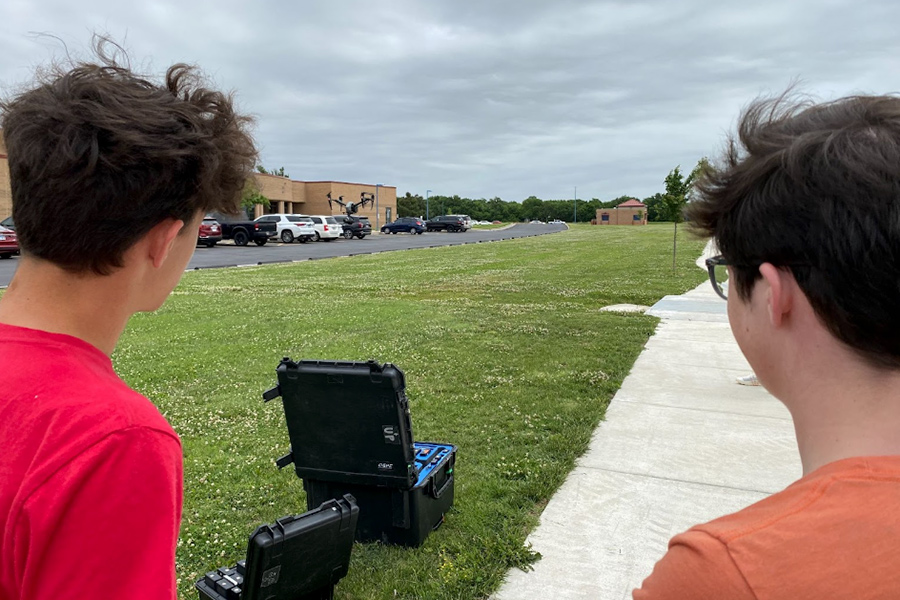
It’s been six years since Aaron Manfull’s article on why purchasing a 360 camera is simply a better option than spending $500-$100 on any sort of drone for your program.
The article is short, concise, to-the-point and lists seven very valid reasons on why the 360 camera would be cheaper, easier to train on and a more viable option for your program.
What if six years later, you decided you wanted to give the drone route a chance? With their widespread usage in journalism, broadcasting and cinema, perhaps your team would use the drone a few times a month to capture visuals for your news show, special video projects, yearbook hype video or other projects that hit your project board?
Here’s our journey to getting started in the drone world and how our visuals took off (no pun intended) when we listened to the students and began actively using the drones in the field to cover stories in our surrounding community. Buckle up-I’m not an expert on drones by any means but here’s some information to get you started in the drone world.
Part 1-The knitty gritty legal details of UAV drones
To begin, students actively using drones in the field by themselves is a very dangerous, sticky situation (regardless if it’s the school’s drone or their personal drone). The school can be named a plaintiff if any major accident occurs at a school field, with a school drone or during school hours. It’s incredibly important to have a VO (Visual Observer) for any adult or student attempting to get drone footage with any sort of risk factor. The less experienced the flier is, the more a visual observer is crucial to a flight operation. Any student, teacher or administrator can fly a drone for personal use without a license or taking the Part 107 test. It’s important not to fly near airports, be in appropriate air spaces or fly near any live sporting event where the risk factor increases dramatically.
Any sort of compensation-anything in value-changes the flight from a recreational/personal use operation to a commercial use. Commercial flights require a Part 107 license. Students in an educational scenario can fly drones for course credit without FAA permission. Most importantly, you must always follow the rules of the sky when conducting and flying drones. If a student is wanting to operate a drone on their own to make any sort of compensation outside of school, push them to study and take their Part 107 test to become licensed. The best advice for advisers is to train your students accordingly, and be with them if they’re looking to obtain some drone footage as their visual observer. Hand the controller over and coach/work with them as they are flying to make them feel comfortable.
It’s just a really good idea overall for the instructor to obtain their Part 107 if the program is actively using drones in the field. Sticking to the Part 107 and UAV rules in general and being safe, smart and strategic in your flying will minimize the risk of dangers, accidents or harm to your students or others. According to Matt Wait, founder of the Drone Journalism lab and professor at the University of Nebraska-Lincoln, “getting the license solves an awful lot of problems and makes everything much simpler.”
Part 2-How do I get started? Getting yourself familiar with flying
I was lucky enough to step into a program with two severely damaged DJI Phantom 3’s needing significant work to get them back flying. You will likely need to purchase a starter drone (Phantom 3, Phantom 4 or one of the Mini’s from DJI are all solid choices!) and can plan on a $500-$1000 investment to get your drone and accessories off the ground.
While MOST people would begin watching YouTube tutorials and videos online to learn to fly, I would strongly encourage you to find a drone pilot/professional in the area (videographers that use them in their work are highly suggested!) to show you the ropes on basic flying techniques, controls, understanding the functions of the drone and basic flying around your school or community. You likely can find someone for $50-$100 an hour to come train you, hands-on in person to get you comfortable flying the drone. This first-person training is the way to really learn how to be comfortable operating, planning and flying your drone. As an adviser, it’s important that you take the time on your plan, the weekends or even the summer getting comfortable with all the functions, control, accessories and capabilities of the drone you have purchased. You can also look into local and state colleges that offer training events through your state’s career and technical education associations while picking up professional development points by attending the training.
I would encourage you to also consider taking a drone course online to learn the in’s and out’s of operating a UAV and can help prepare you for the FAA drone exam if you plan on using the drone to make financial profit for your program or even a personal side hustle. If you’re using the drone recreationally and just to pick up a couple shots here and there for news/feature video coverage, the course can still be extremely beneficial so you know and understand the rules and can begin to teach your students the essentials before they are flying in the field for video coverage. You likely need a solid 20-30 hours of lessons, videos, in-person work and just practicing on your own to feel really comfortable before it’s time to start training your students.
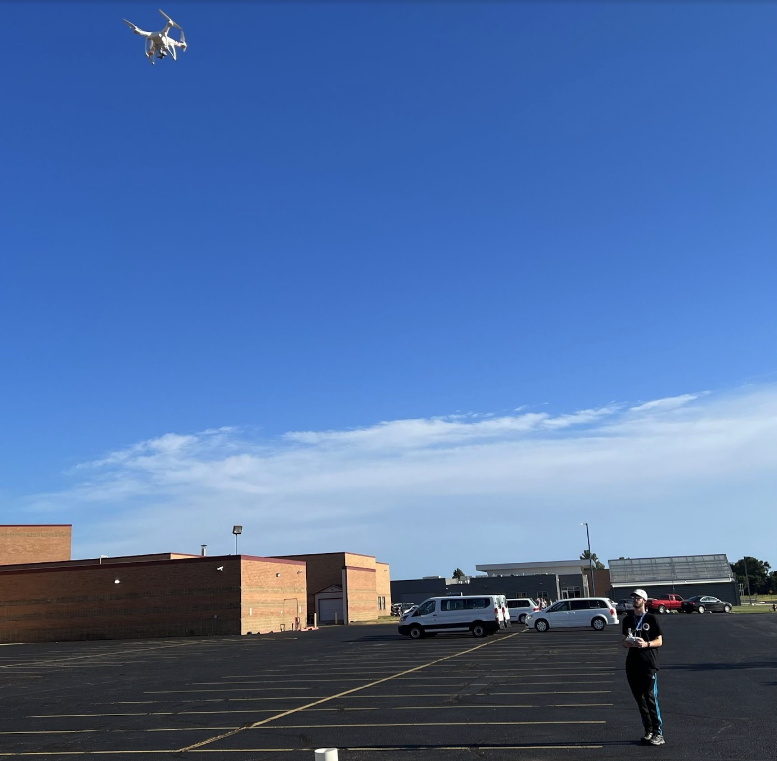
Part 3-Training your team on basic drone knowledge and flying
Once you feel comfortable with the basic drone rules, guidelines and have a certain comfort level in flying the drone, it’s time to take a full class to teach those rules, guidelines, go through the pre-flight checklist with your students and ultimately, get their hands on the drone with the second half of the class. I would suggest not cramming each and every single rule down their throat on the first day of rules. Instead stick to the really important guidelines to know when flying in the field around people, objects, weather hazards and other important flight considerations. As you know, when you have the drone at the front of the class and the kids are learning rules, they are honestly ready to just get their hands dirty and begin flying!
It can take anywhere from 10-15 minutes to train each student on the pre-flight checklist, understanding the controller functions, connecting your phone, learning take off procedures and then ultimately teaching the commands of the controller, in-flight considerations and the basic movements the students need to understand. If you refer to the important guidelines document (above) you can also see some advanced camera movements that drones use that are quite different from shooting b-roll from the ground. You could consider buying items such as a landing pad for students to practice taking off and landing, along with different training hoops off Amazon for students to practice smooth movements from left to right, up and down and following a predetermined path with the drone.
My biggest advice when students take off for the first flight is just getting them comfortable with the eight different button operations and how the left joystick works with the right joystick to create a variety of different movements in flight. Find a football field, park, big open field or somewhere with little to no obstacles such as trees, cars, people, telephone lines or houses so students can feel comfortable to be aggressive with the remote while flying for the first time!
Part 4-Defining your purpose in the field and what visuals you can collect
It’s always appropriate to have conversations with your student before going out in the field to collect footage for a project. Here are some important conversation points prior to filming.
-How many shots are you trying to obtain?
-What kind of movements make sense with the story?
-Are you attempting an opening or closing shot for a video?
-What are obstacles and considerations we need to discuss before flying today?
-Will we be in appropriate air space and be flying legally?
-What other equipment considerations do we have (batteries, SD cards, propeller guards to lower danger risks, etc.)
-Is there any weather we need to know about prior to the shoot?
-If it’s a business or somewhere other than your school community, have we obtained permission or notified a manager/owner that we’ll be shooting drone footage? (Try your best to limit these types of shoots to 15-20 minutes MAX
-Will you be flying in manual and controlling all of your movements, or will you use one of the specialized features on the DJI drone to enhance the visuals?
I think the more discussion you have prior to the filming day, the more efficient and less time consuming the drone shoot as a whole will go for advisers and their students. When I’m with students for drone footage, it’s often during my plan period or after school. I don’t want to waste time thinking about weather, accessories, people, obstacles and other considerations once we get out to the location. Let’s be as efficient as possible, pick up the 3-5 shots (on average) that the students are wanting to grab and get back to our regularly scheduled day.
That’s all for now! Hopefully that gives you enough insight to begin looking into training, drone rules and regulations, potential drones for your program and a basic idea of preparation, planning and shooting for purpose once you’re out in the field with your students acquiring some drone footage for your next video creation!

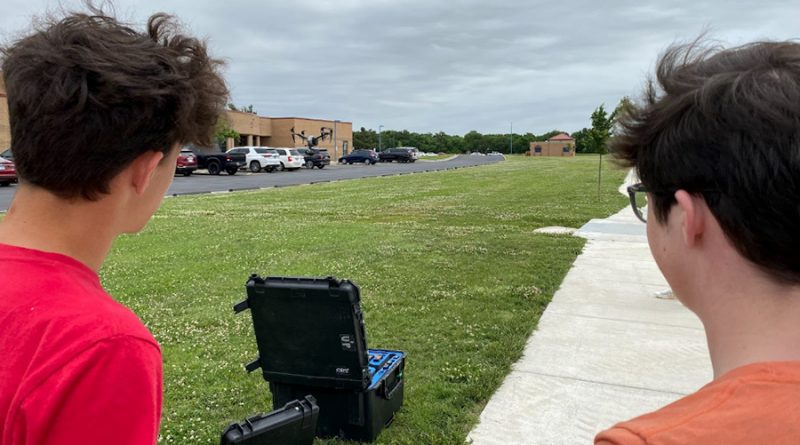

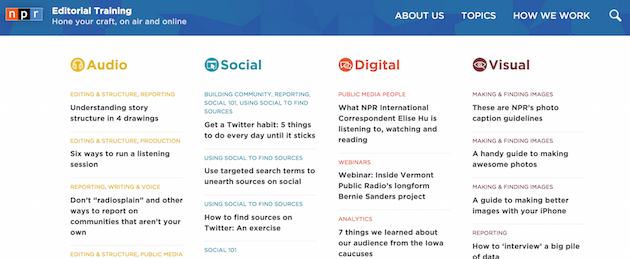
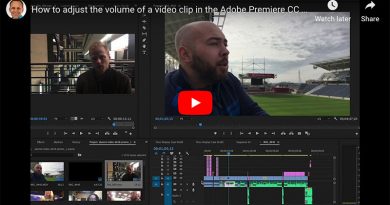
The greatest recommendation for advisors is to prepare their students appropriately and to accompany them if they want to use drone footage as a visual aid. Justing checking a fence builders near me ..